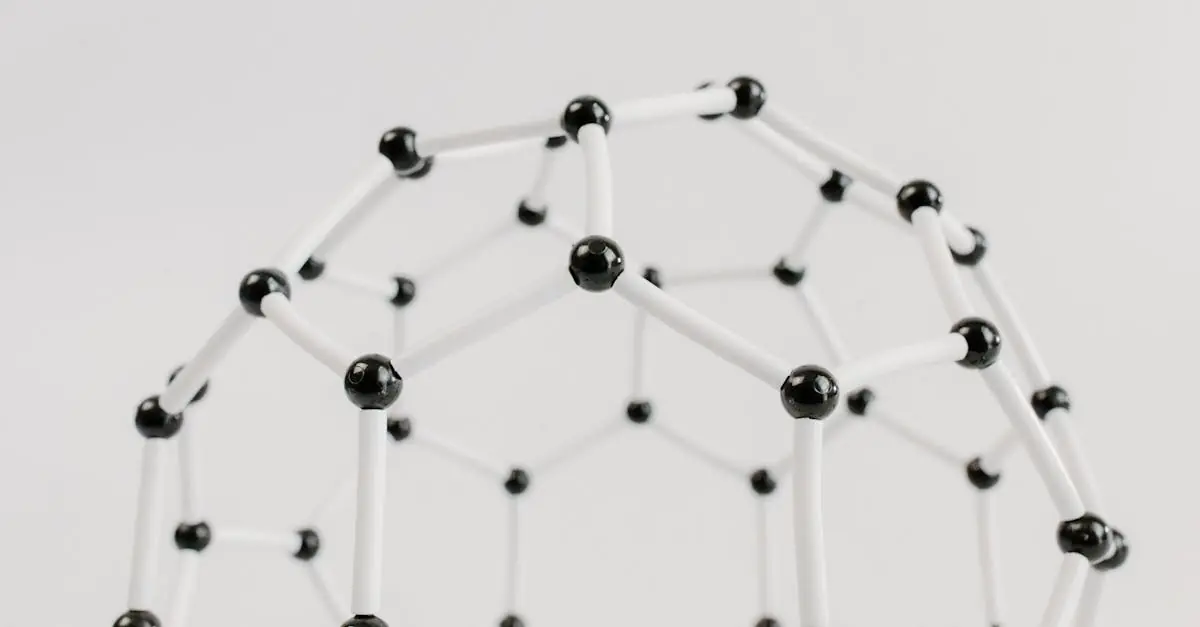Imagine a world where tiny machines work wonders right under your nose, making everything from your morning coffee to life-saving medicines smarter and more efficient. Welcome to the fascinating realm of nanotechnology, where the minuscule meets the miraculous. This field isn’t just for science fiction enthusiasts; it’s a game-changer that’s reshaping industries and our everyday lives.
Table of Contents
ToggleOverview of Nanotechnology
Nanotechnology revolves around manipulating matter at the atomic and molecular scale, specifically structures sized between 1 and 100 nanometers. This small scale offers unique properties and capabilities, fostering advancements across various fields, including medicine, electronics, and environmental science.
Definition and Scope
Nanotechnology encompasses the design, production, and application of structures, devices, and systems by controlling shape and size at the nanoscale. Its broad scope includes using nanoparticles, nanomaterials, and nanosystems, which exhibit distinctive behaviors compared to their larger counterparts. Applications range from drug delivery systems that improve treatment efficacy to materials that enhance the performance of electronic devices. Researchers continuously explore new uses, expanding nanotechnology’s impact on industries and society.
Brief History
The term “nanotechnology” first appeared in 1974, introduced by physicist Norio Taniguchi. He outlined the potential of manipulating materials at nanometric levels. Significant advancements followed in the 1980s and 1990s, leading to the development of techniques like atomic force microscopy and scanning tunneling microscopy that enabled scientists to study and interact with nanoscale materials. The 2000s marked a surge in funding and interest, as governments and private sectors recognized nanotechnology’s potential. Today, numerous innovations stem from this field, demonstrating its ongoing evolution and influence.
Applications of Nanotechnology
Nanotechnology’s reach spans various sectors, showcasing its versatility and innovative potential. Significant applications include medicine, environmental science, and industry.
Medical Applications
Nanotechnology enhances drug delivery systems, improving targeting and absorption. Researchers utilize nanoparticles to encapsulate drugs, allowing for precise delivery to affected areas, minimizing side effects. Techniques like nanostructured biomaterials aid in tissue engineering and regenerative medicine. Diagnostic tools benefit from nanoscale sensors, enabling early disease detection through minimal invasiveness. Cancer treatment advancements include nanoshells, which selectively destroy tumor cells while sparing healthy tissue. The ability to fabricate nanoscale implants accelerates healing and boosts biocompatibility with human tissues.
Environmental Applications
Nanotechnology addresses environmental challenges effectively. Water purification systems leverage nanoscale filters that eliminate contaminants and pathogens with high efficiency. Significant research focuses on using nanoparticles in solar cells to enhance energy capture and conversion. Catalysts at the nanoscale optimize chemical reactions, reducing pollutants in industrial processes. Soil remediation techniques involve nanomaterials to absorb and detoxify heavy metals, promoting ecosystem recovery. Air quality improves through nanostructured materials in filters that capture airborne pollutants and allergens.
Industrial Applications
Industrial advancements incorporate nanotechnology to boost efficiency and performance. In manufacturing, nanoscale coatings enhance the durability of products, providing resistance to wear and corrosion. Electronics benefit from reduced component sizes and improved performance due to nanoscale materials, enabling faster processors and lighter devices. Nanotechnology also enables the production of lightweight composites, enhancing automotive and aerospace design for fuel efficiency. Packaging industries leverage nanomaterials for improved barrier properties, extending product shelf life. Energy storage solutions, including batteries, gain higher capacity and faster charging times through nanostructured electrodes.
Benefits of Nanotechnology
Nanotechnology offers numerous advantages across various industries, significantly enhancing both efficiency and effectiveness. The unique properties of nanomaterials play a crucial role in improving product performance and reducing costs.
Enhanced Performance
Enhanced performance represents a key benefit of nanotechnology. Products utilizing nanoscale materials often exhibit superior strength, durability, and functionality. For instance, nanotechnology improves drug delivery systems, allowing for targeted actions that increase the effectiveness of treatments. In electronics, nanoscale components enable faster processing speeds and reduced energy consumption. Furthermore, materials designed at the nanoscale can provide unique properties, such as increased conductivity, which allows for more efficient energy transfer. Overall, nanotechnology cultivates innovations that yield better results across diverse sectors.
Cost-Effectiveness
Cost-effectiveness is another significant advantage associated with nanotechnology. Reducing the size of materials often leads to lower quantities needed for production without compromising quality. For example, nanoscale coatings enhance product longevity, decreasing the frequency of replacements and maintenance costs. Additionally, energy-efficient nanomaterials contribute to lower operational expenses in manufacturing and consumer electronics. By enhancing the performance of products while minimizing waste, nanotechnology creates significant savings for businesses and consumers alike. Overall, it supports more sustainable practices that benefit both the economy and the environment.
Challenges and Risks
Nanotechnology presents various challenges and risks that warrant careful consideration. These include health risks and environmental concerns that might arise from its widespread application.
Health Risks
Potential health risks associated with nanotechnology include exposure to nanoparticles. Inhalation or skin contact with engineered nanoparticles can lead to unknown toxicity, impacting human health. Studies suggest some nanoparticles may penetrate biological membranes, possibly causing cellular damage or triggering inflammatory responses. Ensuring safety requires rigorous testing for toxicity before new nanomaterials are introduced into products. Regulatory agencies need to establish clear guidelines to assess these health risks associated with nanomaterials effectively.
Environmental Concerns
Environmental concerns focus on the impact of nanomaterials on ecosystems. Nanoparticles could accumulate in soil and water, disrupting local wildlife and vegetation. Their small size presents challenges for detection and remediation, complicating efforts to manage potential contamination. Additionally, the long-term effects of these materials on environmental health remain largely unknown. Proactive measures in monitoring and regulating the use of nanotechnology can help mitigate adverse environmental consequences and promote sustainable practices in its application.
Future Directions in Nanotechnology
Emerging trends in nanotechnology showcase its expanding potential across numerous sectors. Advances in material science often lead to the discovery of innovative applications, such as nanosensors that offer real-time monitoring of environmental conditions. Multifunctional nanomaterials with tailored properties hold promise for revolutionizing energy storage, making batteries more efficient and longer-lasting. Researchers pay close attention to the integration of nanotechnology in biotechnology, where it enhances drug delivery systems, improving patient outcomes through targeted therapies.
Research opportunities abound in the field of nanotechnology. Investigating the effects of nanoparticles on human health and the environment remains a critical area of study, as understanding toxicity can help mitigate risks. Innovations in photovoltaic materials and energy capture systems also deserve exploration, given their potential to increase efficiency in renewable energy. Collaborations between academic institutions and industry players foster innovative projects, leading to advancements in nanofabrication techniques. Pursuing these avenues can lead to breakthrough solutions addressing global challenges such as climate change and healthcare advancements.
Nanotechnology stands at the forefront of innovation across multiple industries. Its ability to manipulate materials at an atomic level opens doors to groundbreaking advancements in medicine, environmental science, and technology. As researchers continue to explore its potential, the benefits of enhanced performance and cost-effectiveness become increasingly evident.
However, the journey isn’t without challenges. Addressing health and environmental risks is crucial for ensuring a sustainable future. With ongoing research and collaboration between academia and industry, the promise of nanotechnology can be realized while safeguarding public health and ecosystems. The future is bright for this transformative field, offering solutions to some of the world’s most pressing challenges.







